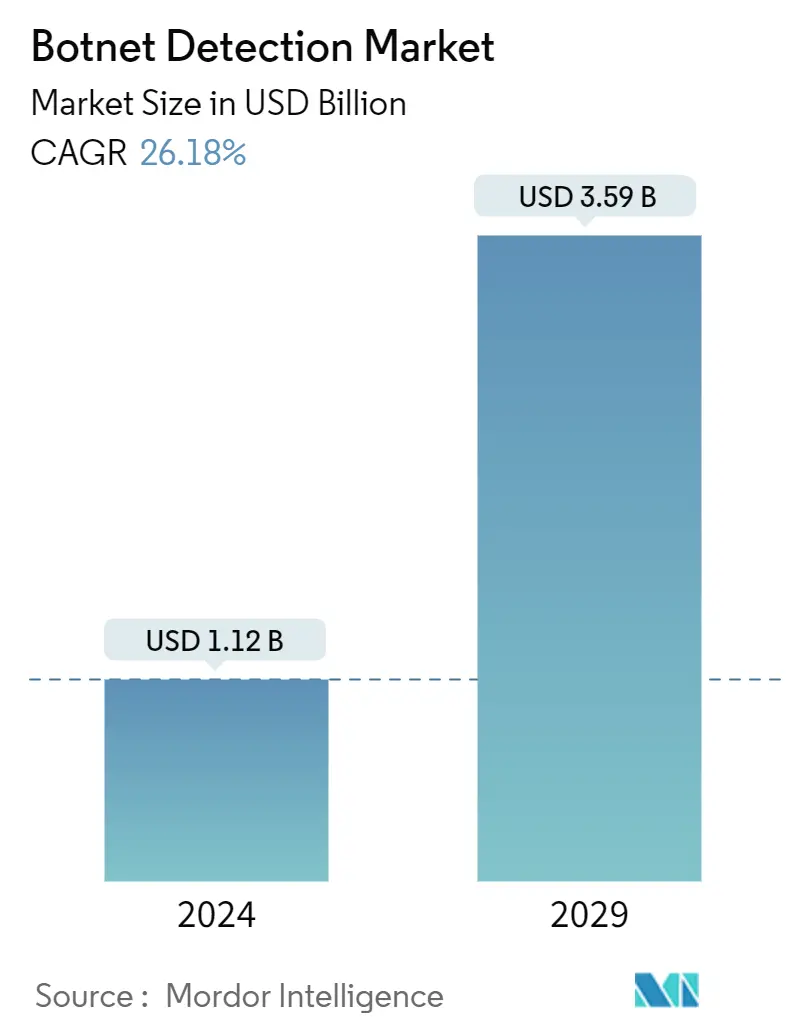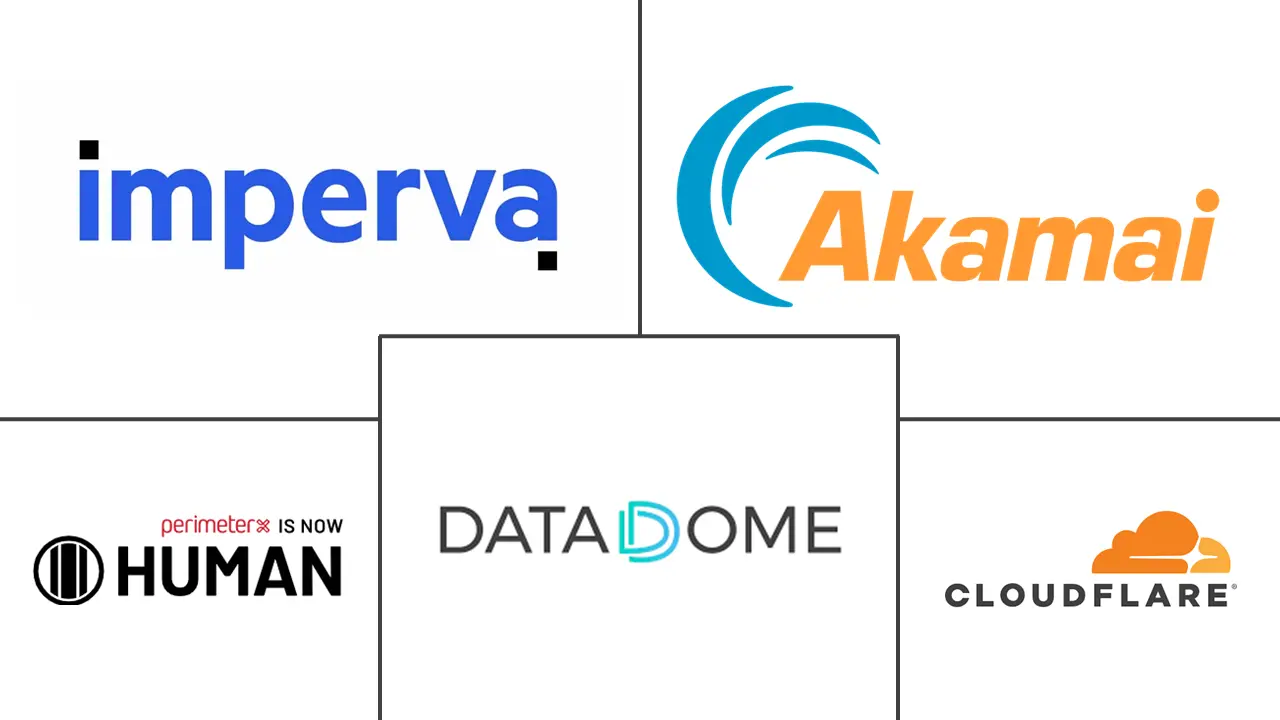Market Size of Botnet Detection Industry

| Study Period | 2019 - 2029 |
| Market Size (2024) | USD 1.12 Billion |
| Market Size (2029) | USD 3.59 Billion |
| CAGR (2024 - 2029) | 26.18 % |
| Fastest Growing Market | Asia Pacific |
| Largest Market | North America |
Major Players
*Disclaimer: Major Players sorted in no particular order |
Need a report that reflects how COVID-19 has impacted this market and its growth?
Botnet Detection Market Analysis
The Botnet Detection Market size is estimated at USD 1.12 billion in 2024, and is expected to reach USD 3.59 billion by 2029, growing at a CAGR of 26.18% during the forecast period (2024-2029).
Botnet detection has accumulated widespread attention among cybersecurity professionals and technology companies worldwide. As technology progresses across the globe, the risk connected with the misuse of advanced technology has also grown over the past years. Botnet attack is one such violation of the user's privacy where a user's computer is being controlled and managed by a third party. The botnet has been developing as one of the principal threats owing to the growing cybercriminals' capacity to infiltrate any of the devices which are attached to the internet across the globe.
- In recent years, there has been a proliferation in the Internet of Things (IoT) technology, which added additional endpoints for attackers. The emergence of new distributed denial of service (DDoS) bots at an increasing regularity attributes to the changes in the landscape. After the reporting of the Mirai botnet in 2016 and the subsequent leak of the malware's source code, the number of variants of this family of botnets has been growing steadily, its success being augmented by an environment of poorly-managed IoT devices.
- Due to the growth of mobile devices and cloud computing that act as attack surfaces, it has become easier for malicious bots to disguise themselves. The hackers traditionally used malicious bots for money-making activities. Now, they are increasingly used for industrial espionage and even influencing elections. Companies have to index attacks intensively and study them before countering them with their strategies. In December 2021, Google disrupted the 'key command and control infrastructure' of Glupteba, a botnet that compromised nearly one million Windows devices worldwide, and filed a lawsuit against its operators.
- The convergence of physical security with the IP network expands the attack surface for cybercriminals. Criminals have expanded from targeting specific user accounts or regions to conquering entire internet entities. In September 2021, the Russian search engine Yandex was attacked at a record level by a distributed denial of service attack by the Meris botnet. The attack destroyed the company's web infrastructure with millions of HTTP requests before hitting a peak of 21.8 million requests per second (RPS) and destabilizing its existing infrastructure. The Russian DDoS mitigation service Qrator Labs identified the attack and noted that the DDoS attacks leveraged HTTP pipelining originating from over 250,000 infected network devices from Mikrotik.
- However, the lack of skilled cybersecurity professionals to disrupt such attacks continues to be a vulnerability that companies face. The companies are recruiting new cybersecurity professionals to train them with the evolution of botnets and use detection software to prevent potential attacks. Mergers among the big players in the market are another solution the companies have come up with to strengthen their services and product portfolio.
- COVID-19 spam was a prevalent issue during the lockdown period and can be primarily divided into two types: with and without attachments. Vendors have had to rapidly roll out new offerings that match the pace of attackers worldwide. In July 2021, as the second wave of the virus surged, Neustar Inc. introduced UltraBot Protect to deliver enhanced capabilities to users to examine traffic patterns to determine risk, easily set rules, and block nefarious web application traffic through an intuitive and comprehensive user interface or the company's extensible API, which deliver actionable data to manage incoming traffic or risks better.

